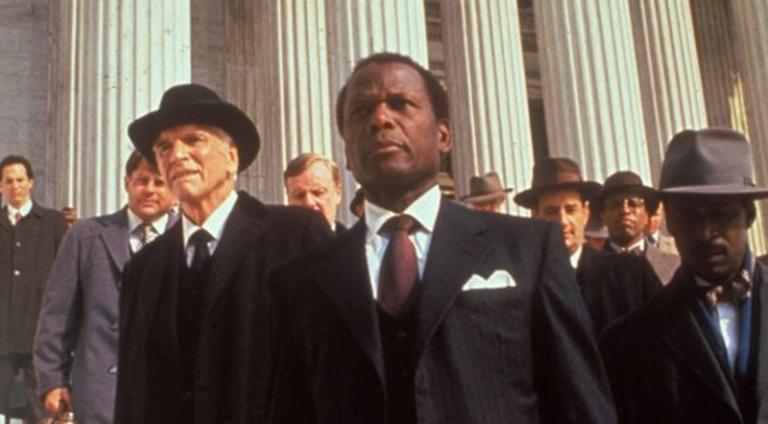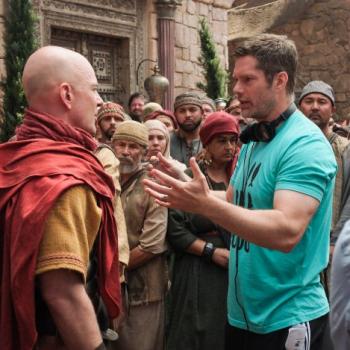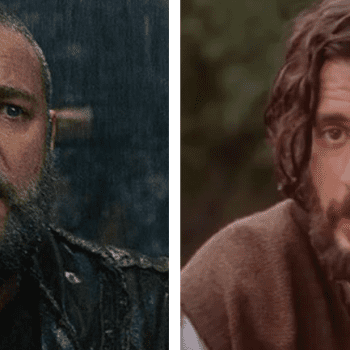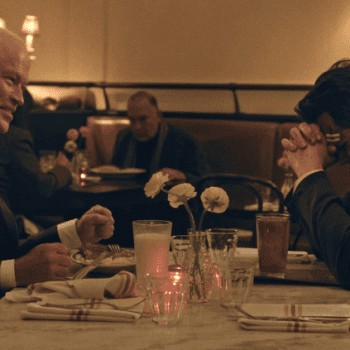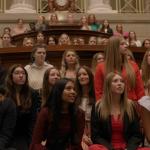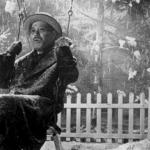The latest in a month-long series of re-posts from my Facebook marathon in April 2020.
–
Sidney Poitier marathon part 20 (1990-1991):
The end of one era, and the beginning of another.
Two years after he returned to the big screen as an actor, Sidney Poitier sat in the director’s chair for one last film, and then he starred in a TV production for the first time in decades, thereby kicking off a new television-oriented phase in his career.
The last film Poitier directed was Ghost Dad (1990), which reunited him with Bill Cosby, who had co-starred with Poitier in three films between 1974’s Uptown Saturday Night and 1977’s A Piece of the Action.
In the earlier films, Cosby had played a hustler in his late 30s. But by this point in his career, Cosby was in his early 50s and had become known as “America’s father”, thanks to the success of The Cosby Show (which premiered in 1984) and books like Fatherhood (which came out in 1986). So it made sense that he would play a dad in this comedy.
Weirdly, though, the film has some elements that don’t make it quite as family-friendly as one might have expected.
For one thing, there’s the whole premise: The film is about a widower who gets along with his kids better after he dies, or at least after he is presumed dead. (It’s a little like how 1993’s Mrs Doubtfire begins with a divorce. Both films are family comedies that start with children enduring some sort of family-disrupting trauma.)
The dad’s “death” follows an encounter with a Satanist taxi driver.
The dad is having an affair with one of the family’s neighbours, who invites him over for some “afternoon delight” and has sex with him even after he becomes a ghost (though she does not know that he is a ghost at that point in the story).
At one point a bus drives right through the ghost dad and his face heads straight for an old female passenger’s crotch. A cop urinates by the side of the road, oblivious to the fact that the ghost dad is standing right in front of him.
When the dad tries to tell his kids that he’s a ghost — before he has figured out how to speak audibly — one of them interprets his sign language to mean that he has a small penis, and another assumes that he is calling himself “a big sissy”, i.e. a gay stereotype.
And there are some crude gags involving the teenaged daughter’s would-be boyfriend.
The weirdest thing about the film is how the dad’s presumed death doesn’t really seem to affect his life at all. He still worries about losing his job, for one thing! (I am vaguely reminded of how the title character in Bruce Almighty is given the powers of God himself — and uses them to get a promotion.)
And the movie isn’t even remotely consistent when it comes to the question of how physical or visible the dad is or isn’t. You have to give movies like this some leeway when they show people falling through floors but not through the ground, etc., but they should at least aim for consistency in other areas, and in this film, the ghost can’t eat or drink because everything passes right through his body, but he can still wear clothes or, alternately, take them off and have sex with someone, and while an X-ray machine can’t detect him at all, the doctor can still rest his hand on him and examine him. Etc., etc.
I also wonder if some of the visual effects looked as bad then as they do now. In some scenes, the dad simply “blinks” onscreen for some reason — he’s visible for a few frames, then not visible, then visible again, etc. — and it’s such a cheap visual effect that you keep thinking it would be done very, very differently in this computer-generated era. But did it look cheap at the time? I suspect so, given that this movie came out the same year as Ghost, which I haven’t seen in 30 years but I remember it being state-of-the-art as far as the effects went; I imagine Ghost Dad suffered by comparison with that film.
So, in a nutshell, this is not a very funny or family-appropriate film on the one hand, and not a particularly satisfying film on the aesthetic or world-building level on the other hand.
A few other quick points:
— Cosby tells the taxi driver, “I am Satan! I command you to stop this cab!” Cosby had actually played the devil a few years earlier in a 1981 Disney movie, of all things, called The Devil and Max Devlin.
— One of the kids in Cosby’s neighbourhood brags about how expensive his bike is, and Cosby says, “You’re a Republican, aren’t you?” This film came out nine years into the 12-year Reagan-Bush era, which was the longest uninterrupted Republican tenure in the White House since the beginning of the Great Depression in the early 1930s.
— Parts of this movie play less like a ghost movie and more like a riff on The Invisible Man. Cosby has some sort of physical presence, at least some of the time, but he is only visible under dark lighting conditions, so when he’s out and about in normal light he wears sunglasses as well as bandages or scarves around his face.
— This time in LGBT references: See the note above about the “big sissy” stereotype. On a related note, there are repeated jokes about a man named Edith who insists he does not have a lady’s name because he pronounces the first syllable the same way we pronounce the first syllable in Edward.
— Ghost Dad grossed $24.7 million and ranked 52nd for the year at the North American box office. That was better than the grosses for Poitier’s previous two directorial efforts (1982’s Hanky Panky and 1985’s Fast Forward) combined — it was also a lot better than the $4.6 million that Cosby’s previous film, Leonard Part 6, grossed in 1987 — but it was well, well behind the grosses for 1980’s Stir Crazy. (Box Office Mojo does not have figures for the films that Poitier directed in the 1970s.)
Poitier then launched the final phase of his career by starring in Separate but Equal (1991), a TV miniseries about the Brown v Board of Education case, which ended segregation in American public schools in the early 1950s.
Poitier plays Thurgood Marshall, the lawyer who argued in favour of desegregation before the Supreme Court and was eventually appointed to the court himself. It was the first TV production that Poitier had starred in since 1955 — 36 years earlier — but nearly everything he did after this was for television rather than the big screen.
Separate but Equal is a pretty standard production of its sort, and I don’t have a whole lot to say about it, except that I was intrigued by some of the tactical debates that take place among the civil-rights lawyers, some of whom don’t want to attack segregation itself lest they lose the case and set the cause back several decades. Instead, they feel it would be better to focus on enforcing the “equal” part of the “separate but equal” laws, e.g. by making sure that black schools get the same funding that white schools have. And at least some state politicians are eager to play along with this by providing extra funding for black schools, if it will help to preserve the segregated system.
Marshall, of course, ends up going after segregation itself — and then the miniseries focuses on the debates within the Supreme Court, as the justices argue amongst themselves over the merits of the case, while Marshall and his associates dig deep into the historical archives to see if they can find any evidence to prove that the legislators who passed the 14th Amendment in the 1860s would have argued against segregation as well.
It might not be the most dramatic of films, but it all works well in a high-school-history-class sort of way. And I’m sure some high-school teachers have shown this miniseries in class.
A few other quick points:
— This miniseries marked the first time that Poitier had played a contemporary real-life character since playing one of the Harlem Globetrotters in 1954’s Go Man Go. (The real-life Marshall died in 1993, two years after the miniseries aired.) He would do it at least once more after this.
— The miniseries takes place between 1950 and 1954, when the real-life Marshall was 42 to 46 years old. Poitier was 64 when the miniseries aired. (The 2017 film Marshall took place in 1940, when Marshall was 32, and starred Chadwick Boseman, who was around 40.)
— This was the last film in any medium to star Burt Lancaster. He plays John W. Davis, the lawyer who argued in defense of segregation. Davis was 81 when the Supreme Court rendered its verdict; Lancaster was 77 when the miniseries aired.
— Reunions: The miniseries was written and directed by George Stevens Jr., whose father had directed Poitier in 1965’s The Greatest Story Ever Told. Also, Supreme Court Chief Justice Earl Warren is played by Richard Kiley, who played a high-school teacher opposite Poitier’s high-school student in 1955’s Blackboard Jungle. (Kiley was only five years older than Poitier in real life.)
— Other actors you may recognize: Marshall’s wife is played by Gloria Foster, now best-known for playing the Oracle in 1999’s The Matrix and 2003’s The Matrix Reloaded. And members of the NAACP legal team are played by Cleavon Little (1974’s Blazing Saddles) and Jeffrey Wright (this was only his second onscreen acting credit!).
–
The image above shows Burt Lancaster and Sidney Poitier in Separate but Equal.


